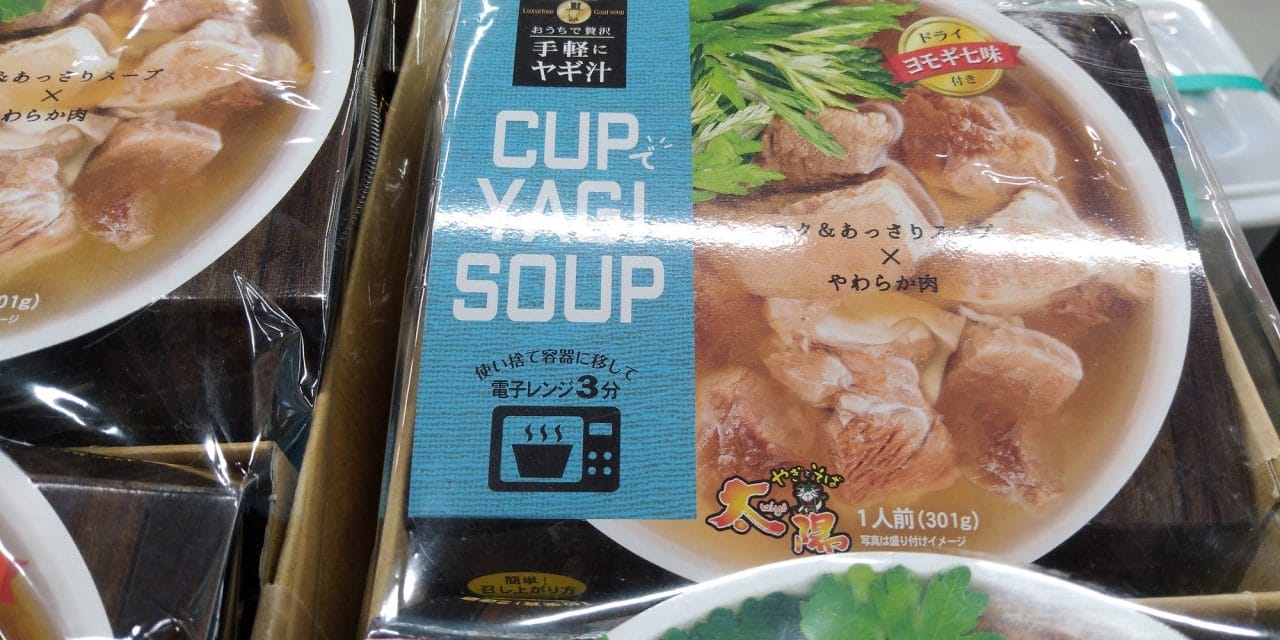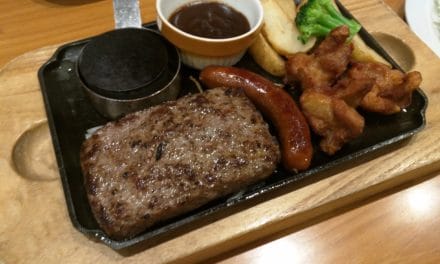When living on a remote island such as Okinawa, it’s only a matter of time until you run into some cuisines that make you go “Maybe it’s time to rethink my life choices…” To save you from this inevitable culture shock, Total Okinawa has once again prepared for you an odd yet fairly common to encounter exotic food list for you to experience and enjoy!
Yagi-jiru
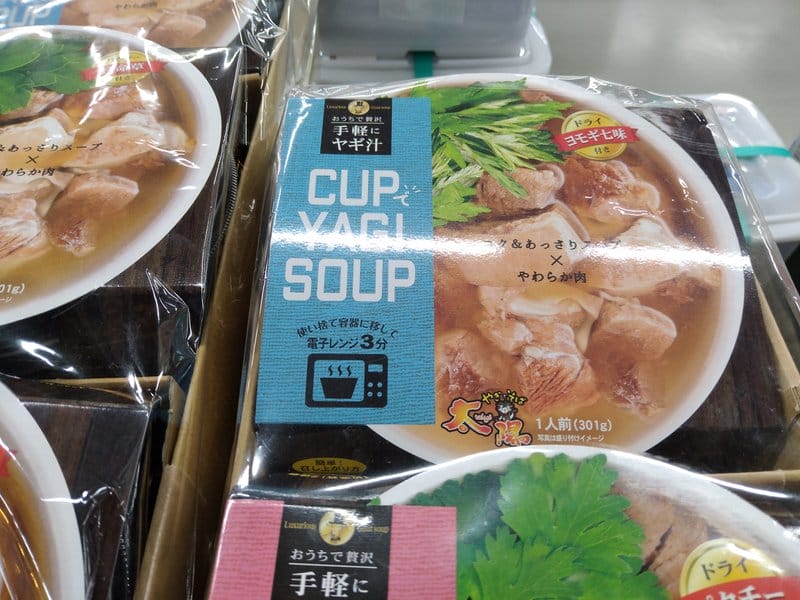
Maybe not the GOAT of soups but it certainly is the YAGI (Yummiest-As-Goat meat can get-I declare!) of them all. Obviously that acronym doesn’t exist and Yagi actually means goat in Japanese. Yagi-jiru in particular is a famous traditional goat broth soup with goat meat, savory fats, and sometimes, beef offal (I said offal; not awful!) Think of it like a beef consommé but with a twist of goat meat instead. As for the taste, as long as you can stomach the initial smell depending on its freshness, it’s pretty darn tasty. You can find Yagi-jiru almost anywhere on island and in fact, they began to commercialize them into convenient cup containers sold right out of the grocery stores. After you’ve had one taste of this soup, I’m sure you will be baa- baa- back for more!
Umibudou
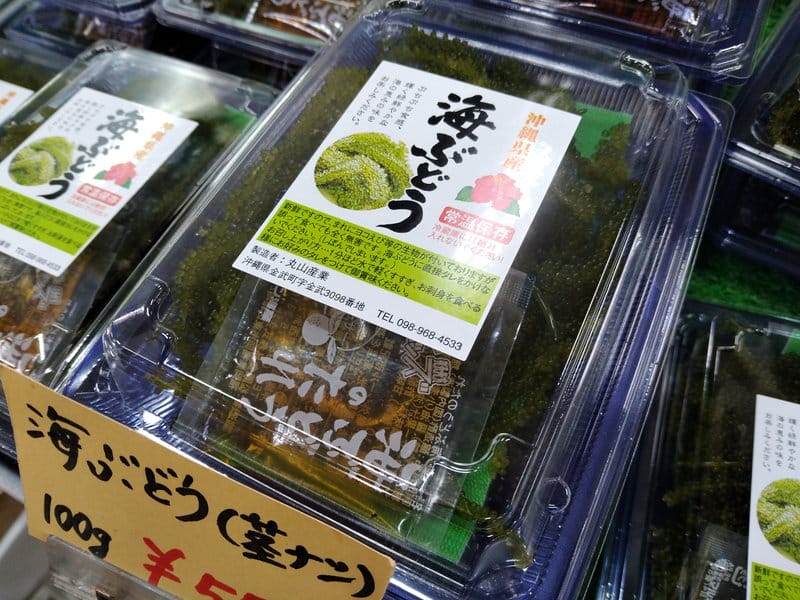
Known as sea grapes or green caviar, these small tiny pulps of salty spheres are more interestingly prepared than they actually taste. At first glance, they look like shriveled up little seaweed strands but once rinsed in water a few times, alive they come and begin to absorb the liquid giving more volume and color. As for the taste, I can see why it’s nicknamed the green caviar as it is pulpy, salty, and spherical in shape which would just go great on top of a cracker and smoked salmon. Sometimes they come with little sauce packets which interestingly enough, once soaked in these sauces, they tend to shrivel up back again to its original form. I told you, crazy stuff right? Umibudou can be found primarily in souvenir shops but lately they began selling them now in grocery stores. For the freshest supply, I recommend going to the wet markets.
Yashigani (Coconut Crab)
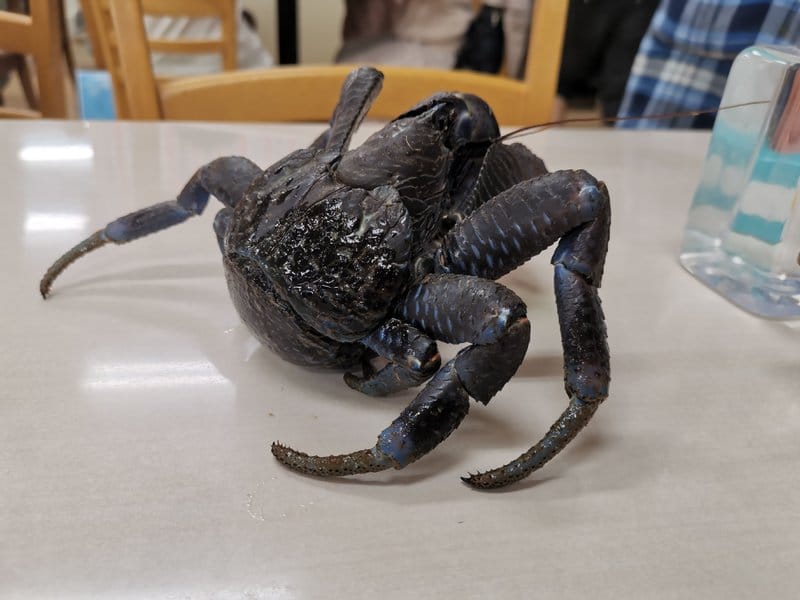
Also known as the coconut crab, these nightmare-ish looking crustaceans can grow to the size of a basketball and it doesn’t help that their fatty butts make them look like tarantulas. (Someone get me a flamethrower and fast!) Despite its fearful looks however, it has one serious major disadvantage – they are absolutely delicious! The best part of a regular blue crab which is the yellow mustard liquid that you sometimes find in its body is full in the derriere of the Yashigani. What the locals do is they open it up so that you can dip pieces of the crab meat in to the yellow substance just as you would with a French fry in to ketchup. Genius really. Yashigani to dine is not really that common and the only place that I am aware that serves them is at the Makishi market located in Naha. Be warned, rarity comes at a price so be prepared to dish out a good amount of dough. It’ll be worth it though with the experience and the taste!
Habu Sake
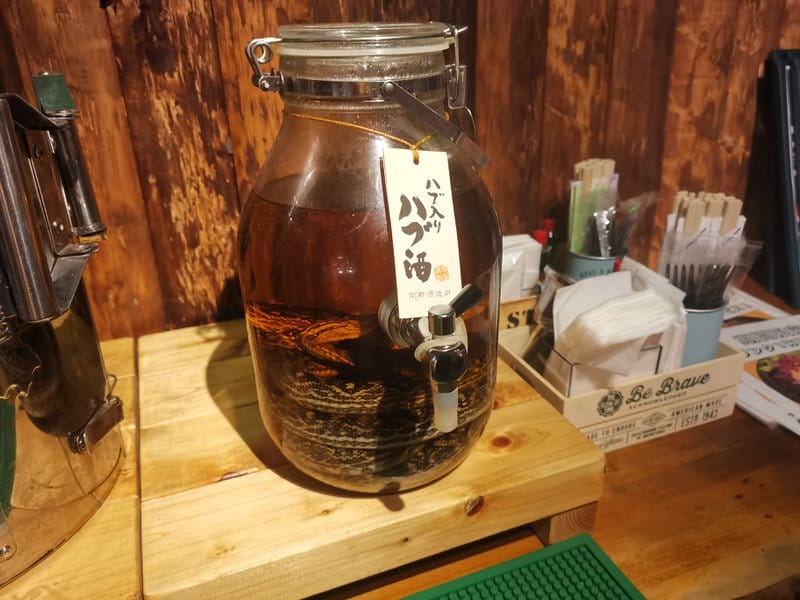
Yes, that same snake you saw crawling on the streets in Yomitan in which you called the police for is now inside your sake. What makes it interesting is that the snake is still poisonous but dissolves in the alcohol which makes it perfectly safe but with a nice little mule kick – or rather should I say, a nice little coil strike. The taste is similar to a typical Japanese Sake but the mental factor of seeing the snake as you drink it gives it a spicy after taste. Habu Sake can be found mostly in souvenir shops abundantly in Kokusai Street but you can occasionally find them in Izakayas and restaurants to taste. If you do encounter it, I say why not? Give it a go if you dare!
Crispy Pata
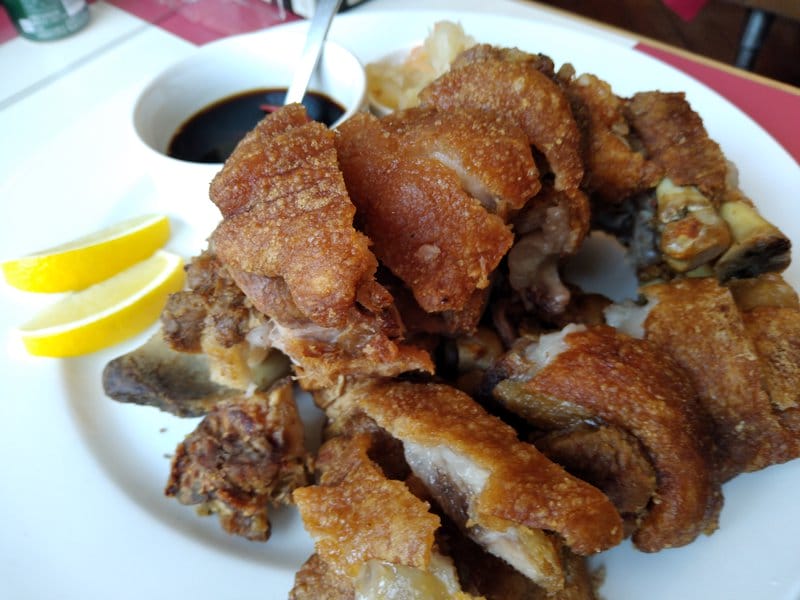
Not originally a recipe of Okinawa but I would like to believe that it started off from serving the crispy Tebichi (pig’s foot) and continued on to include the whole upper leg. Crispy Pata which is what it’s called in the Philippines, is pretty much a deep fry of the entire upper leg of the pig served with soy vinegar dipping sauce, pickled relish, and rice. My objective of it all is to share it with someone and to get as much of the crispy outer skin leaving your partner to suck on the bones and knuckles (that is probably why I don’t have any friends). Crispy Pata can be found in a lot of the Philippine restaurants on island but the most easily accessible one is in the Pizza House senior restaurant located in Urasoe.
Whatever you are in the mood for to try, you are certainly in for a wild and exciting experience that you might only find here on this tiny remote island we all call home. Go and Carpe that Diem!
![]()

